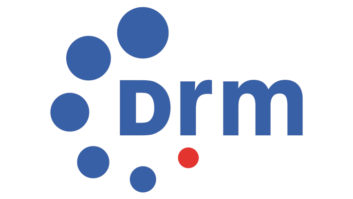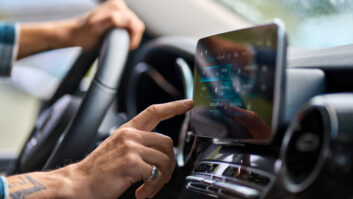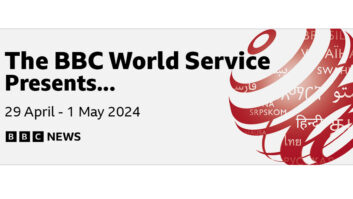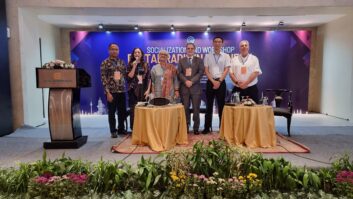This interview is excerpted from the ebook “World Digital Rado.”
The Digital Radio Mondiale broadcasting system is an open standard designed as a digital replacement for analog radio broadcasting in the AM and all VHF bands (I, II, III) including FM VHF band II. It can be operated with the existing channeling and spectrum allocations of a given country or market.

DRM can be used for wide-area coverage in the short-, medium- and longwave bands below 30 MHz, replacing amplitude modulation (AM).
This version is sometimes called DRM for AM and can be tailored with four robustness modes to fit various circumstances including international service.
DRM can also be used for local coverage using VHF bands above 30 MHz, to replace analog frequency modulation (FM); this is sometimes called DRM for FM and has a dedicated robustness mode optimized for local and regional broadcasting.
The DRM Consortium, founded in China in 1997, is a not-for-profit organization; its members include broadcasters, network providers, transmitter and receiver manufacturers, universities, broadcasting unions and research institutes.
We talked with Ruxandra Obreja, consortium chair since 2008.
Radio World: How would you characterize the global progress of DRM?
Ruxandra Obreja: DRM is in a very good place, accelerating its progress both geographically and in receiver solutions. And COVID threw fresh light on certain aspects and benefits of DRM that I hope we’ll talk about.
RW: The latest DRM General Assembly was held in the United Arab Emirates in May.
Obreja: We’ve always said DRM is not only open technology, but global, the only standard that can cover all frequency bands. While we’d held assemblies in Europe, Canada and Malaysia, our meeting in Dubai was the first one in the Middle East. It was good to see the strength of interest across Asia on this occasion.
When some people think of DRM, they think of India; but there are important DRM developments in Indonesia, China, Pakistan, Nepal and New Zealand. And we’ve seen interest even in countries like Malaysia and Thailand, as well as African countries like South Africa.
It’s notable that we have diversified our receiver marketplace. At one point we had one receiver manufacturer in India and one in China; now there are numerous solutions, some global and some smaller agile companies, particularly in Asia.
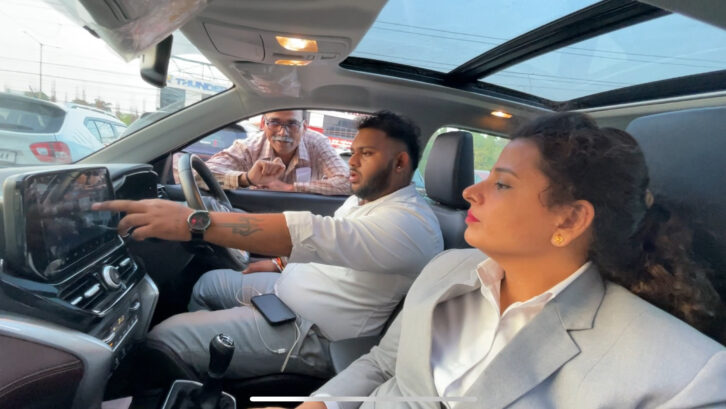
RW: It does seem fair to think of India as a flagship application so far. DRM is used by the public service broadcaster All India Radio; and recently Yogendra Pal, the DRM chairman in the country, wrote a commentary in the IEEE BTS publication about how India could deploy DRM on FM.
Obreja: To review: In India, terrestrial radio broadcasting is carried out in medium-wave at 526–1606 kHz, shortwave at 6–22 MHz and VHF band II at 88–108 MHz. All India Radio, the public service broadcaster, has a network of 742 transmitters, including shortwave, medium-wave and FM; its coverage in medium-wave and FM is 90% by area and 98% by population, whereas around 59% by area in the FM band.
Private radio broadcasting was introduced in 2000 when commercial FM stations were allowed to broadcast programs, mainly music, with local content but no news. There are 388 private FM stations at present and several community radio stations.
AIR has adopted nationwide digital radio services in the medium-wave and shortwave bands using the DRM standard; it has 41 high-power DRM medium-wave transmitters in use. Four transmitters — one each in four major city centers — are carrying pure DRM transmissions around the clock. Thirty-three transmitters are working in simulcast mode, with one hour in pure DRM. Other transmitters are yet to start service. The medium-wave transmitters cover roughly 900 million people with DRM broadcasts.
AIR is carrying two to three digital audio services from a single MW transmitter, along with the Journaline text service. AIR has tested Emergency Warning Functionality with DRM to alert the population during disasters.

Regular AIR digital transmissions in shortwave started in 2009 from a 250 kW transmitter in Delhi. Today a 500 kW shortwave transmitter at Bengaluru is carrying external service of AIR in DRM. Two more shortwave transmitters, 100 kW each, are expected to be operational soon in DRM. And over 6 million new cars fitted with DRM receivers are on the roads in India.
Now the consortium has expressed the hope that the Ministry of Information and Broadcasting will adopt DRM services for the FM band.
We’ve demonstrated the broadcast of as many as six individual DRM blocks or channels from a single transmitter and antenna. One DRM channel carries two to three audio programs, so on a single transmitter one could broadcast as many as 18 programs in pure DRM mode. In this scenario each broadcaster, sharing the same transmitter and antenna, remains in full control of its broadcasts and energy consumption level and need not rely on an expensive third-party operator.
The DRM for FM decision is in the hands of the ministry after analysis of tests and demonstrations of DRM. We believe they’re close to announcing what’s going to happen with digitization of the FM band, though the national elections only recently concluded, and a new minister of information and broadcasting has just been announced.
Some commercial FM stations in big metros in India are quite profitable, and I expect the decision will involve not only AIR, which covers the country with medium-wave, shortwave and FM, but also the private stations.
As you know, in many countries successful FM station owners are not crazy about getting digital, because their business plans are quite profitable. But we hope to demonstrate real benefits — choice, energy savings and digital quality without interference — to get those stations on board.
RW: India’s process has been limited to DRM and HD Radio?
Obreja: Yes. The government requested analysis of the two standards for the FM band. We are hopeful that DRM as an open standard will be chosen, given its use in AM already; it would not make sense to go from one open standard to the other proprietary one. It would be difficult and costly to create DRM+HD Radio receivers. I hope we’ll be able to celebrate the announcement of DRM for FM soon, though I have no special insight into the announcement time frame.

RW: The DRM website has a useful snapshot of where DRM is used or being considered. Are there one or two that stand out?
Obreja: In China, three important agencies last August endorsed DRM for domestic AM broadcasts and China Digital Radio for FM; and they recommended that cars sold there should support such platforms. The government is also requiring a strengthening of broadcast infrastructure because there’s no point in putting receivers in cars if you don’t have the broadcasts.
If India and China were both to embrace DRM, Digital Radio Mondiale would be without doubt the most important and widely used digital radio standard in the world — those countries alone have about 3 billion people.
Indonesia has adopted DRM for both medium-wave and FM, using DRM in VHF Band II (87.0–108 MHz) and Band III (174-202 MHz), with the rest of Band III allocated to DAB+.
Indonesia is important — there are 280 million people on 18,000 islands, and they’re in the Ring of Fire, with its tsunamis and earthquakes. They are very interested in DRM, especially its emergency warning functionality.
Before COVID we might not have emphasized this angle so forcefully, but disaster warnings using digital radio have become quite important across the world, given the manmade and natural disasters we read about in the news.
We also see interest from African countries. Major institutions like the African Telecommunications Union have said that if countries wish to digitize radio, they should only consider DRM and DAB. South Africa has taken this approach, and we hope to see work starting to produce dual receivers.
A few DRM digital transmitters can cover an entire country or a large geographical area. We are keen to see any territory adopt DRM, but its advantages in covering very large areas is indisputable, and I think government regulators and broadcasters have taken that on board.
By the way, different broadcasters use DRM in different ways. Radio New Zealand uses DRM as a distribution platform to islands in the Pacific; although programs are broadcast in DRM, not many of their listeners have laptops with DRM accessories, so they reconvert the DRM signal back to FM to deliver news to those islanders.

RW: What aspects of DRM support emergency alerting and information?
Obreja: Support for emergency warnings — audio as well as multilingual text — has been part of DRM’s DNA from the start. The Emergency Warnings Functionality or EWF can transmit various levels of alerts over large, regional or small areas and in various languages simultaneously by using the embedded Unicode system. Alerts can be customized by region, to avoid unnecessary panic, localized to the disaster area.
This appealed to Indonesia, which has five DRM FM transmitters on the most populous island, Java, that can provide this kind of service. For them, being able to alert the population to natural disasters is crucial.
RW: CML Micro has introduced a receiver module to enable consumer radio manufacturers to deploy low-cost, low-power DRM designs. It’s sold through companies like Mouser, DigiKey and RFMW. Why is it notable?
Obreja: The DRM1000 module is an engineering building block allowing local manufacturers to create receivers for their home markets. It is a single component capable of delivering DRM in all bands, which is fantastic, and it supports features like emergency warning.
It is an antenna-to-speaker solution, and it has all DRM modes, codecs and licenses included. It is very small, about the size of a normal battery; and it is very energy efficient. Power consumption has been an Achilles heel for digital standards, as we all know.
During our General Assembly, a South African supporter of DRM took this module and created a very basic receiver using a 3D printer. It took him not more than an hour or two. So I think the DRM1000 will be a game-changer, especially for markets that want inexpensive receivers.
RW: What else should we know?
Obreja: An important possible application is distance learning. DRM can support education for people wherever they are in a country, even in remote areas — not only during a pandemic or disaster but whenever distance learning is required. The educational programs are free to air to anybody without the need for internet.
DRM receivers also are capable of caching information, like schooling documents, for download at any time. So, a receiver can save information, text, pictures and audio, and the information can be accessed by students on other devices, working almost like a small school library.
Our awareness of this aspect was raised during COVID when children couldn’t go to school. Even now, the figures in Africa are horrendous. Distance learning can also support the work of nurses and health care professionals.
We hope that large organizations that prioritize these issues will not forget the potential of digital radio for education and health information. Even today, 30 to 40% of the world population has no access to internet. We want to show that you can bring information to children of the 21st century, even if they do not have internet connections or/and electricity.
DRM can also be used in public signage, for companies to advertise on large public screens. The Journaline feature enhances text content with designs and graphics, and the signage service supports emergency warning, too. DRM also offers data carriage capability. Digital radio will never beat the speed of internet, but you could use one or more of DRM’s channels for carrying data securely.
Regulators and governments are looking at digitizing radio, they want to understand the technologies and they’re willing to combine, whether that’s DRM and CDR, or DRM and DAB. Having multi-standard receivers will help digitization of radio, and the various proponents of the standards will think more collaboratively.
But digital radio is here to stay. It takes time for important technologies to grow. Will one standard eventually prevail? Well, how many power plugs do you need when you travel the world? Territories are going to choose what’s best for them and meets their specific needs.

